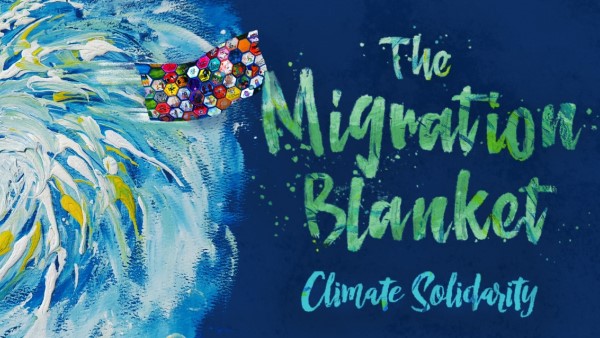Living in a world of acronyms and 140 character statements as we now do, it can be challenging to explain that you are part of an organisation called The Royal Society for the Encouragement of Arts, Manufactures and Commerce.
It becomes even more challenging when inevitably, you must go on to clarify that the Arts are no longer part of the RSA’s remit and that we now focus on three different (though not unrelated) areas.
The RSA’s rich history is both a blessing and a barrier when it comes to explaining what we do and why we do it. Yet back in 1754 when our founder William Shipley first had his bright idea about forming a society to do undertakings for the public good, it was thought that the Arts should play an integral role. In his eyes, a world that did not encourage artistic endeavours would have been a bleak one.
That view still stands today but now we have organisations like the Arts Council to fund new talent and hundreds of museums with free and open access to the world’s finest art. In Shipley’s time, fine art was largely aimed at an elite audience and was dominated by those with patronage networks or tickets into Europe’s most glamourous salons.
One such artist was Jean-Etienne Liotard, a native of Switzerland best known for his incredible pastel portraits. Liotard was an extensive traveller and commonly viewed as one of the most sophisticated artists of Enlightenment Europe. His connection to the RSA would likely have remained buried, were it not for the determined efforts of Art Historian MaryAnne Stevens who came looking for answers in the RSA archives, earlier this year.
Stevens is currently co-curator of the Jean-Etienne Liotard exhibition now showing at the Royal Academy - a world famous exhibition space with which, incidentally, the RSA is often confused. In an effort to fully understand Liotard’s ties to London (which were extensive - the Royal Family were among his patrons), she came across something unexpected: meeting minutes from 1772 that explicitly mention Liotard’s involvement with the Society.
Over the winter of 1772–73 the Society’s Committee on the Polite Arts conducted an inquiry into the quality of pastel crayons being produced in London by a man called Charles Pache. Pache was the former partner of Bernard-Augustin Stoupan of Lausanne, from whom Jean-Etienne Liotard acquired his own pastel crayons. At that time, it was largely accepted that Switzerland produced the best quality pastels in Europe, and had a complete monopoly on the market.
The minutes in our archives noted that:
‘The following certificate from Mr Liotard was also produced to the Committee “I declare that the crayons of Mr Pache are as good as those of Stoupan, and that the dark browns are rather more beautifull [sic].”’
‘The Secretary acquainted the Committee that he had seen Mr Russell and Mr Milbourne two pupils of the late Mr Cotes and who frequently had been employ’d in making crayons for him, who inform’d the Secretary that these [Pache’s] crayons were in every respect equal to the best made by Mr Stoupan of Lausanne of whom Mr Cotes always bought crayons …’.
Stumbling across these comments was a remarkable discovery. As anyone who’s ever delved into the RSA archives will no doubt be aware, our alumni were rather fond of the written word; the archives contains hundreds of thousands of pages of carefully preserved notes from meetings held at RSA House. What these notes in particular provide, is a confirmation that London produced pastels of equal quality to those from Switzerland, verified by one of the world’s leading artists of that medium. This outcome would have had significant impact on the ability of pastel manufacturers in London to supply to prominent artists of the time - a boost to the economy, to say the least.
You can find replicas of the minutes on display at the exhibition, demonstrating one of the many ways in which the RSA is woven into the fabric of global history. Although we no longer work directly with the art world, the legacy of past Fellows’ enthusiasm for the arts is still informing research today. The notes also establish the RSA’s early role as a facilitator, a role that endures in 2015 as we work with institutions like the Met police to bring about organisational change; bring communities and local authorities together to utilise their heritage; and help people to make valuable connections through the Fellowship network.
Related news
-
Catalyst Award supports ‘Listen in at Roche Court’
Series two of this podcast has been awarded the Catalyst Award Scaling Grant, supporting students and lifelong learners in building the programme.
-
Metamorphosis workshops for creative wellbeing
Coming up at the end of July are a series of ‘Metamorphosis’ creative labs, workshops and performances, presented by Intercultural Roots.
-
Film screening of 'The Migration Blanket - Climate Solidarity' at RSA House
On Wednesday 13 July, artist and activist Salma Zulfiqar FRSA invites you to a free film screening and Q&A of 'The Migration Blanket - Climate Solidarity', showing artworks of women on the frontline of the climate crisis.


Join the discussion
Comments
Please login to post a comment or reply
Don't have an account? Click here to register.
A great example of how the strands of the RSA and fellows from different fields work together recognising and promoting innovation and industry ( pastel making in UK) that promotes education and creativity ( cheaper and more plentiful panels for artists) . And of course here we are today putting on the exhibition .